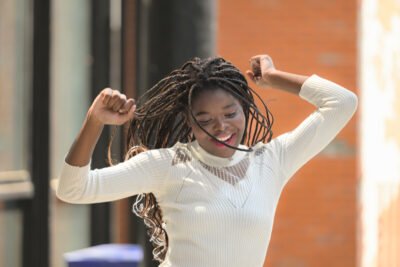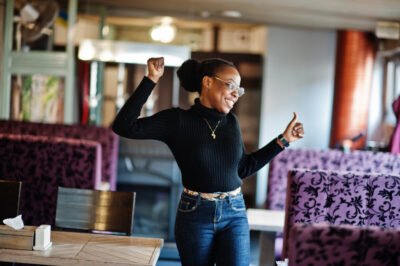They tried to bury us, but they didn’t know we were seeds. And we dance where they tried to end us.” Across time and across oceans, African peoples

They tried to bury us, but they didn’t know we were seeds. And we dance where they tried to end us.”
Across time and across oceans, African peoples have danced through grief, joy, resistance, and survival. For us, dance has never been just art or entertainment—it has always been a tool. A tool for healing, remembering, fighting, birthing, and transforming.
And no matter what was done to us—colonialism, slavery, war, exploitation, silence—the dance remained.
On the Continent: Dance as Healing, Medicine, and Memory
From the beginning, African dance has been rooted in the body’s wisdom and the spirit’s truth:
-
In Zimbabwe, the mbira and ritual dance reconnect the grieving with their ancestors.
-
In Senegal, Sabar rhythms help communities gather, express emotion, and reclaim strength.
-
In Burundi and Uganda, drumming and dance are integral to healing from trauma and marking life’s transitions.
-
In South Africa, women danced resistance into the ground, refusing to break under apartheid.
-
In Kenya, traditional movement is being revived to help survivors move trauma out of their bodies and back into sacred connection.
To dance in Africa is to say:
“My body still belongs to me. My joy cannot be colonized. I remember who I am.”
In the Diaspora: We Brought the Dance With Us
When our ancestors were stolen, the dance traveled with them.
Enslaved Africans in the Americas danced in secret. They used ring shouts when their tongues were forbidden. They stomped their feet to speak to God when they could not speak aloud. They used the body as a drum, the shuffle as a code, the circle as a shield.
Dance held what was unspeakable. It helped mothers survive babies being torn from their arms. It helped warriors remember they were still kings and queens, even in chains.
Dance was code. Dance was rebellion. Dance was survival.
At Congo Square in New Orleans, our people danced on Sundays, refusing to let the spirit die. On plantations, the ring shout carried grief, prayer, and resistance in one motion. In the hush harbors, dance and rhythm became holy fire.
We turned blues into hip-hop. Ring shouts into gospel stomps. Step shows into declarations. We took sorrow and made rhythm. We took rhythm and made freedom. And then we passed it on.
Today: Black Survivors Still Dance to Heal
Wherever we are—Africa, the Caribbean, the Americas, Europe—we are still using dance to manage pain, rage, joy, and memory.
-
Survivors of domestic violence join healing dance therapy groups in community centers and shelters.
-
Black women in therapy rooms are guided to move through dissociation and reclaim home inside their own bodies.
-
Churches, HBCUs, and community circles continue to make space for stomp, clap, shout, and sway—sacred movements that remind us we are not broken, only rising.
-
Afro-diasporic communities are reviving ritual dances that connect us back to ancestors, Spirit, and each other.
Because the world hurls hate at us from too many directions:
-
Institutions that ignore our pain
-
Partners who violate our trust
-
Cultures that criminalize our survival
-
Systems that pretend not to see us
So we turn to something older than pain.
We turn to the drum.
We turn to the hips, the hands, the heart.
We dance not to forget, but to remember.
Not to perform, but to become whole again.
This is survival in motion. This is how we carry memory and healing in our bodies.
“The one who dances does not carry the burden alone.”
— African Proverb
For Every Black Survivor Who Has Danced in the Dark…
When no one believed you, you danced.
When rage threatened to eat you alive, you danced.
When you remembered who you were beneath the shame,
you danced yourself free.
You are not alone.

🕯️ May We Continue to Dance:
-
As a ritual of resistance
-
As a ceremony of remembrance
-
As a language older than trauma